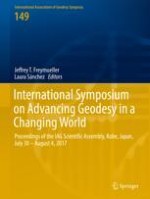2019 | OriginalPaper | Chapter
Calibration of Empirical Models of Thermospheric Density Using Satellite Laser Ranging Observations to Near-Earth Orbiting Spherical Satellites
Authors : Sergei Rudenko, Michael Schmidt, Mathis Bloßfeld, Chao Xiong, Hermann Lühr
Published in: International Symposium on Advancing Geodesy in a Changing World
Publisher: Springer International Publishing
Activate our intelligent search to find suitable subject content or patents.
Select sections of text to find matching patents with Artificial Intelligence. powered by
Select sections of text to find additional relevant content using AI-assisted search. powered by
